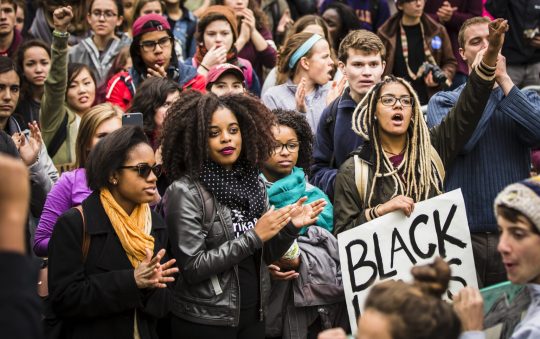
Do you ever get the feeling that when it comes to news about the nation’s economy you’re in a different world?
I certainly do. And what’s more, I think much of America – especially Black America — feels the same.
A decade has passed since the housing collapse. In that time, bank profits are back and continue to rise. Despite occasional trading fluctuations, the stock market remains profitable for most investors. Then there’s the low rate of unemployment that is often cited as if economic strides have included nearly everyone.
But unemployment data does not reflect the vast number of people who today are working and earning less, otherwise known as the underemployed.
People who toil at jobs that pay less than in previous years often have a work ethic that is bigger than their paycheck. Even for those who take a second job, the extra and modest earnings seldom free them from hoping they have enough money to make it through each month.
I also think about the families who sacrificed retirement or building savings to give their children a college education. Both new college graduates, their parents and sometimes grandparents are startled at the amount of debt they share and how long it will take to fully repay it.
Whatever happened to the American Dream of owning a home and giving your children a better life than you experienced as a child? Is this ‘dream’ being deferred or denied?
The stark reality is that between the rising cost of college and the equally rising costs of homeownership, much of the country that works for a living is in a financial catch-22.
This contention is borne out by an updated consumer survey that annually measures profiles of both home buyers and sellers. Each year, the National Association of Realtors (NAR) surveys consumers who purchased a primary home in the past year. For 2018, NAR used a 129-question survey of consumers who purchased a home between July 2017 and June 2018.
Summarizing results, NAR concluded that current housing trends are affected by “mounting student debt balances,” along with rising interest rates, higher home prices and larger down payments.
“With the lower end of the housing market – smaller, moderately priced homes – seeing the worst of the inventory shortage, first-time home buyers who want to enter the market are having difficulty finding a home they can afford,” said NAR Chief Economist Lawrence Yun. “Homes were selling in a median of three weeks and multiple offers were a common occurrence, further pushing up home prices.”
Despite the financial hurdles noted by the NAR survey, there was a single glimmer of encouraging news. For the second year in a row, single female buyers are successfully pursuing their own American Dream. While married couples comprise 63 percent of home buyers, single females represent 18 percent, purchasing homes at a median price of $189,000.
But for the rest of the home buying market, NAR found that the past year meant a median home purchase price of $250,000 required a median household income of $91,600 for a successful mortgage application. Additionally, the nation’s median home down payment now is 13 percent, or $32,500 for that $250,000 priced home.
How long does it take for families to amass $32,000 for a home down payment? Longer than most families would want to wait, I’m certain. According to new research by the Urban Institute, median wealth for Black parents is $14,400 compared to White parents at $215,000, and $35,000 for Hispanic parents.
“As the NAR report shows, the share of first-time homebuyers continues to lag far behind historical norms,” commented Mark Lindblad, a Senior Researcher with the Center for Responsible Lending (CRL). “Efforts should be directed toward pairing low-down payments with affordable and responsible mortgage products so that low-income households and borrowers of color have equal access to the opportunities that come from owning a home of one’s own.”
Lisa Rice, President and CEO of the National Fair Housing Alliance shared a similar view to that of Lindblad.
“The NAR’s survey underscores the persistent difficulty under-served communities face when trying to purchase housing,” said Rice. “With a median purchase price of $250,000 and down payment of $32,500, homeownership remains out of reach for far too many and this exacerbates stress on rental housing prices.”
The most recent figures from the Census Bureau report that nation’s 64.4 percent homeownership rate in the third quarter of 2018 was not statistically different from that of 2017 when it tallied 63.9 percent. Geographically, homeownership in the Northeast, Midwest and South remained the most stagnant.
In stark contrast, the financial outlook for the 64 percent of Americans who already own a home brought a hefty median equity gain of $55,000 when they sold their residence over the past year. Additionally, after selling their homes, 44 percent traded up to a large home.
In other words, if you can find a way to become a homeowner, the costs incurred will likely be outweighed by the economic gains.
But making that important financial transition from renter to homeowner will become harder as mortgage interest rates climb from the historic lows of recent years. Additionally, should home inventories remain low, the likelihood of ‘supply and demand’ economics will keep driving prices higher as well.
“Now more than ever,” added Rice, “we need radical policies that will spur the development of affordable housing in all communities.”
Charlene Crowell is the Center for Responsible Lending’s Communications Deputy Director. She can be reached at Charlene.crowell@responsiblelending.org







